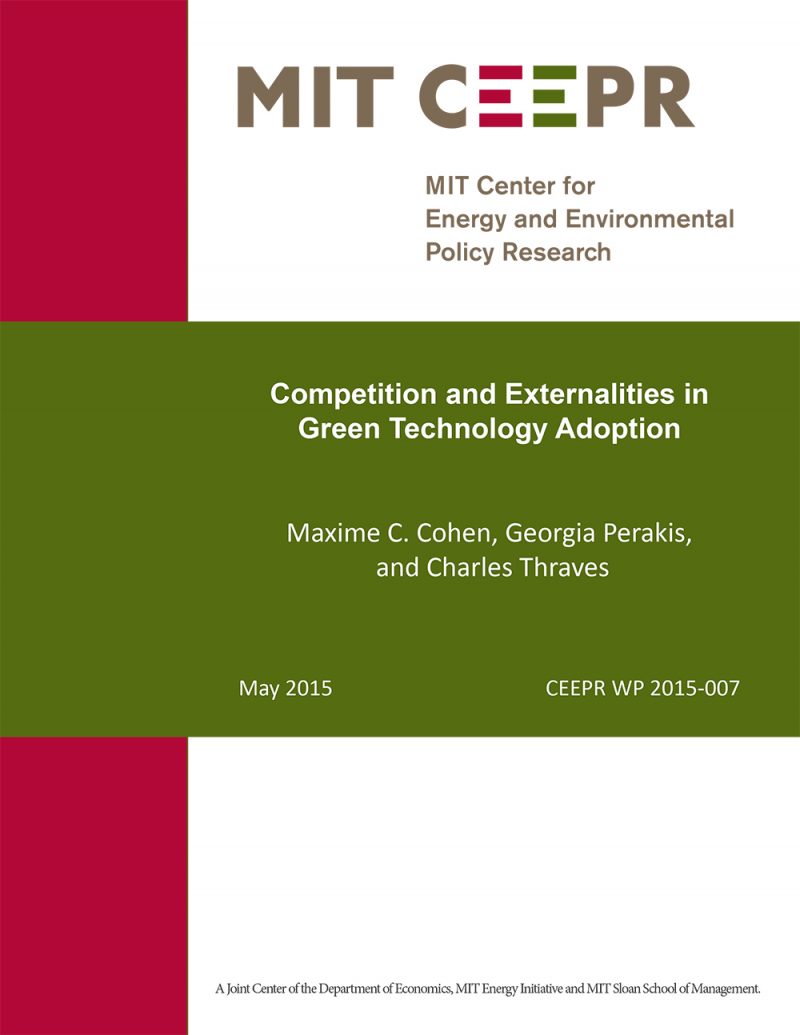Competition and Externalities in Green Technology Adoption
Maxime C. Cohen, Georgia Perakis, and Charles Thraves
May 2015
In this paper, we study the effects of competition among multiple suppliers who sell green technology products, such as electric vehicles. The government offers consumer subsidies to encourage the product adoption. We consider a setting where suppliers adjust production and price depending on the level of subsidies offered by the government to the consumers. Our analysis expands the understanding of symmetric and asymmetric competition, incorporating the external influence from the government who is now an additional player in the system. We quantify how competition impacts the consumers, the suppliers as well as the government relative to the monopolistic setting where all the products are jointly produced from a single firm. In other words, we quantify who is bene fitting from the competition and under what conditions. Our model incorporates demand uncertainty as well as positive externalities. We first compare different government objectives and determine that the magnitude of the externalities plays a key role in selecting the right objective. We then show that the effects of competition may differ depending on the demand uncertainty, the supplier asymmetry and the magnitude of the externalities. When externalities are relatively small, we show that competition hurts the suppliers and benefits the government. However, it does not always benefit all the consumers, as it is usually the case in classical competition settings. We also show that in a market with large externalities, consumers, unlike the government, are always better-off in a competitive environment. Finally, we test our model and validate our insights using actual data from the electric vehicle industry, which is becoming increasingly competitive.
Key words : Competition, Externalities, Government Subsidies, Green Technology Adoption, Newsvendor



